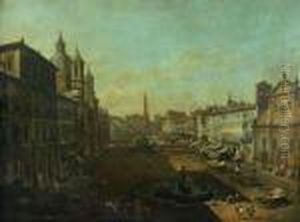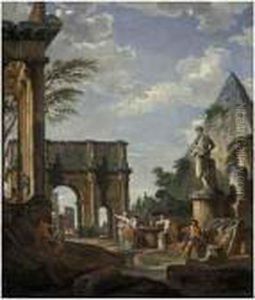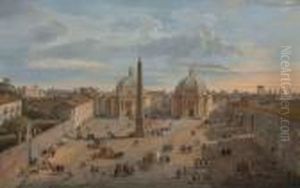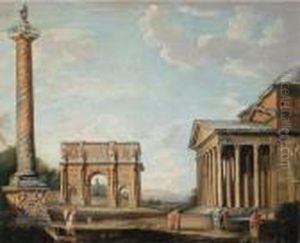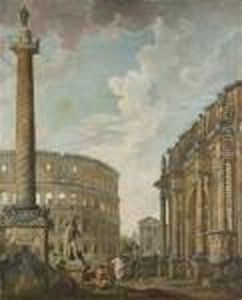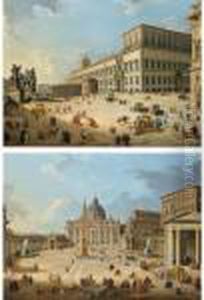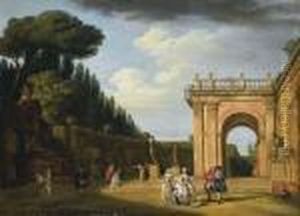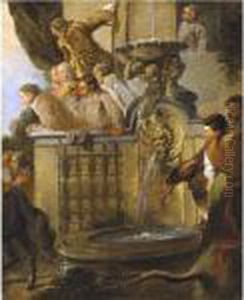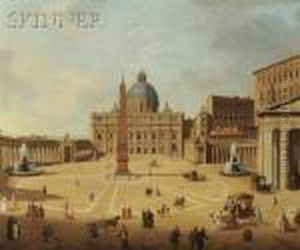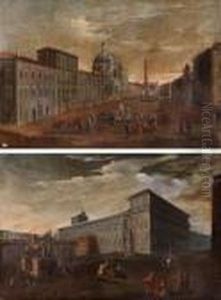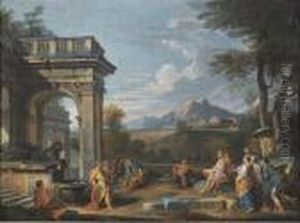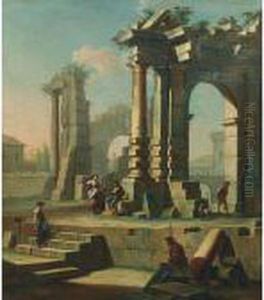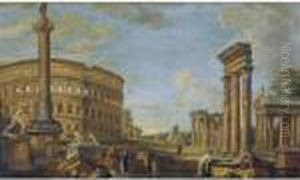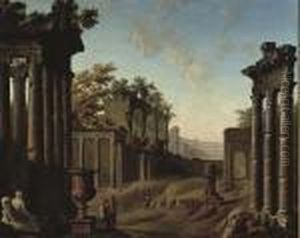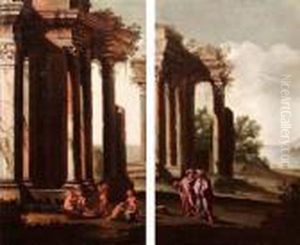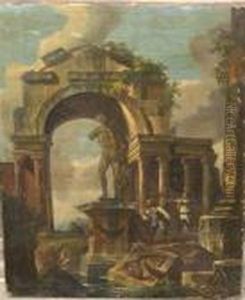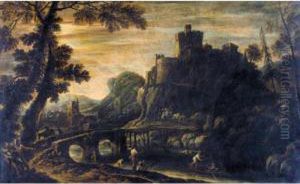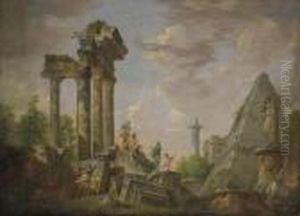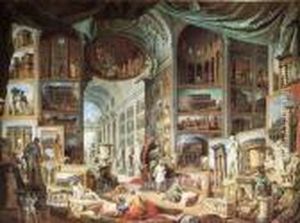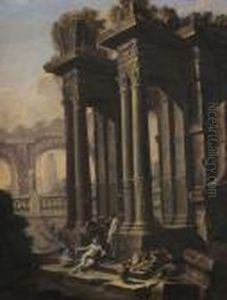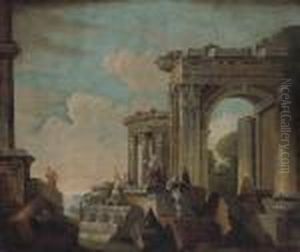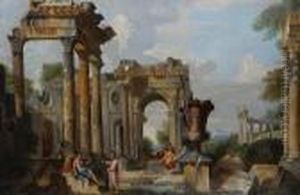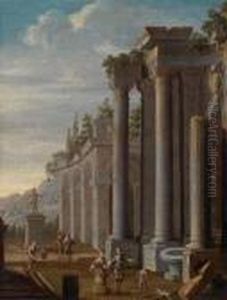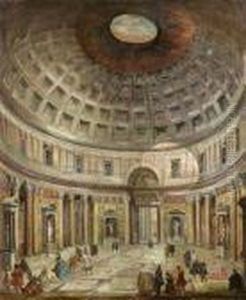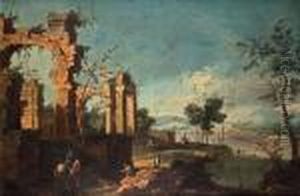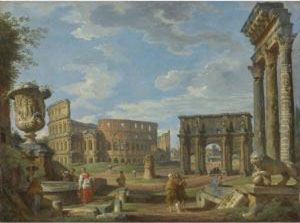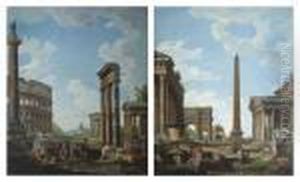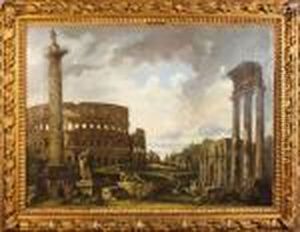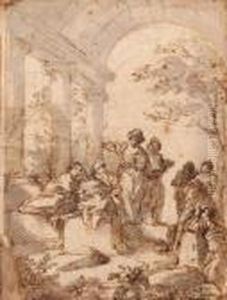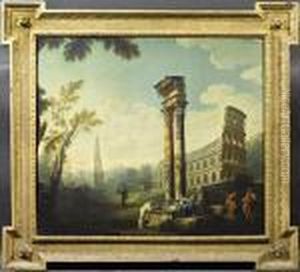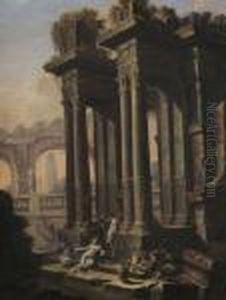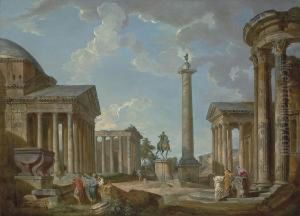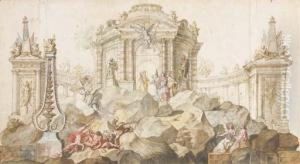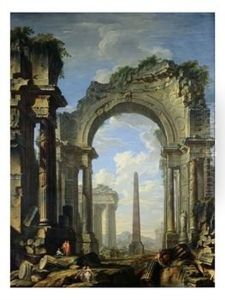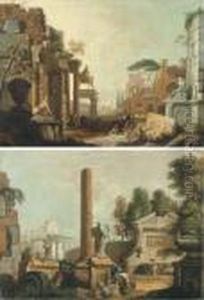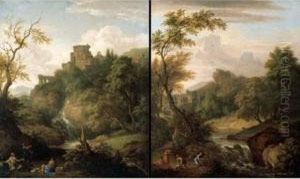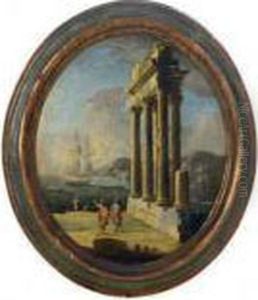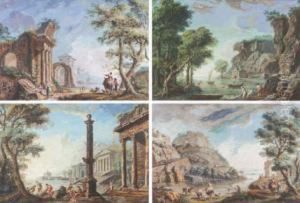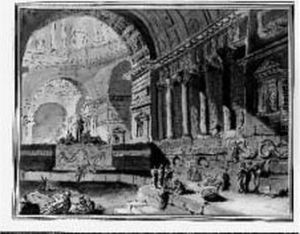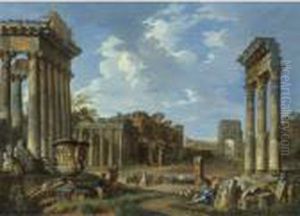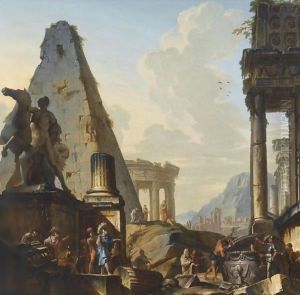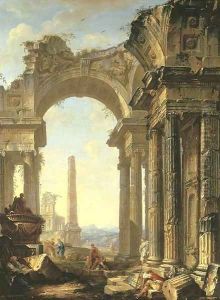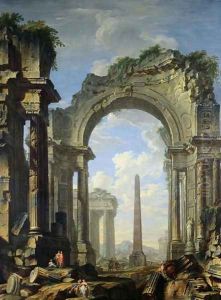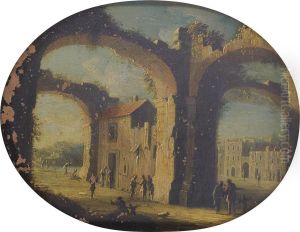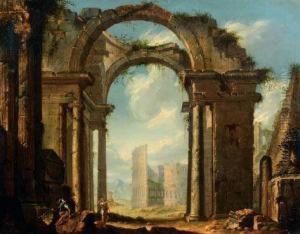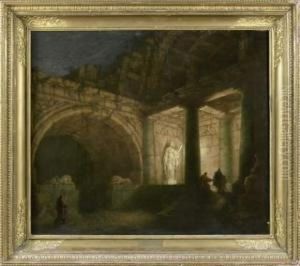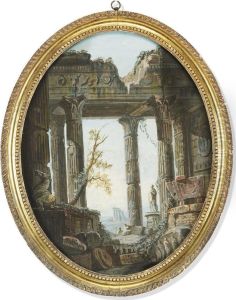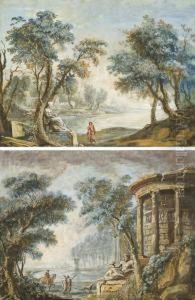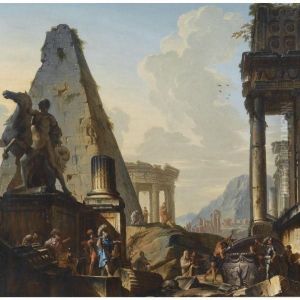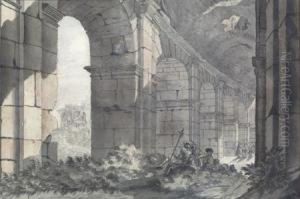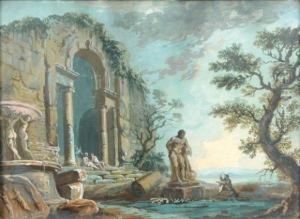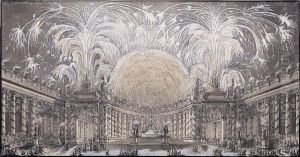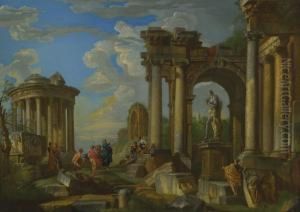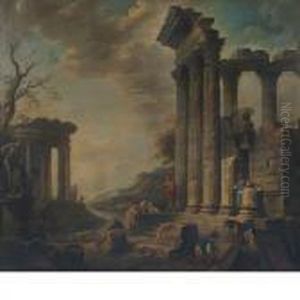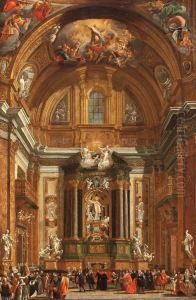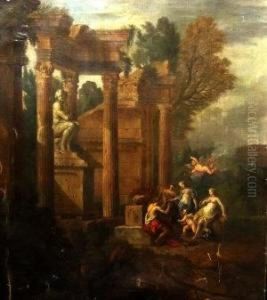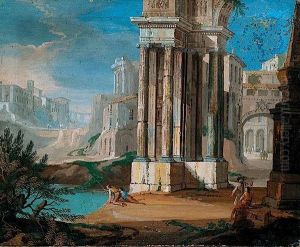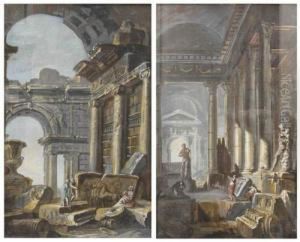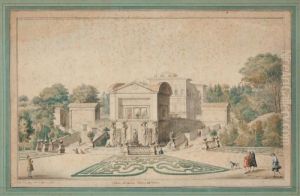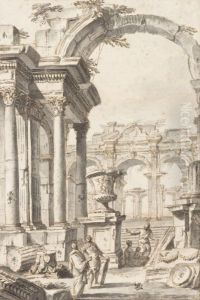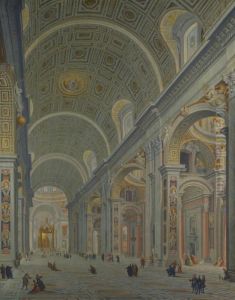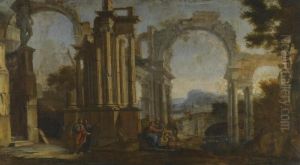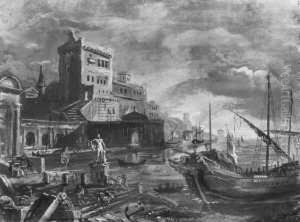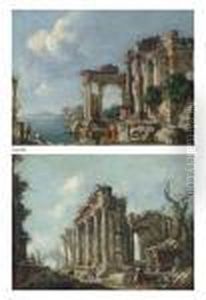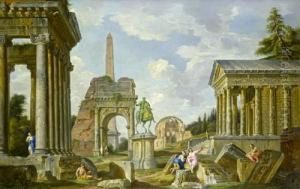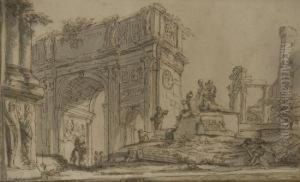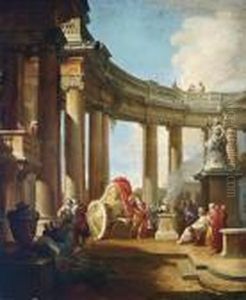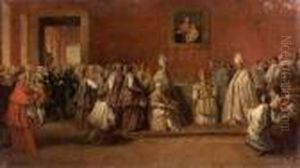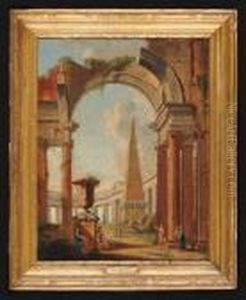Giovanni Niccolo Servandoni Paintings
Giovanni Niccolo Servandoni, born in 1695 in Florence, Italy, was a distinguished figure in the realms of architecture, scene design, and painting during the 18th century. His career spanned various European countries, reflecting the era's cosmopolitan artistic exchange. Servandoni is particularly renowned for his work in France, where he settled and significantly contributed to the architectural and cultural landscape of the time.
Servandoni's architectural legacy is best embodied by the façade of the Church of Saint-Sulpice in Paris, France. Commissioned in 1732, this masterpiece showcases his mastery of classical architecture, imbued with a sense of theatricality perhaps derived from his experience as a scenographer. Although he could not complete the project to his original plan due to financial and technical constraints, the façade remains a landmark of Parisian architecture, celebrated for its grandeur and harmonious proportions.
In addition to his architectural endeavors, Servandoni was a prolific scene designer for the opera, creating elaborate and innovative sets that captivated Parisian audiences. His work in this domain exemplified the integration of architectural principles into the theatrical arena, enhancing the visual and emotional impact of performances. He was instrumental in advancing the art of stage design, incorporating mechanized scenery changes and lighting effects that added depth and realism to the theatrical experience.
Servandoni's talents also extended to painting, where he specialized in capriccios: imaginative landscapes that combined real and fantastical elements. These works further illustrate his versatile creativity and deep understanding of spatial composition, offering viewers an escape into whimsical, architecturally rich environments.
Despite his success, Servandoni's life was not without controversy and challenges. He was known to have a volatile personality, which sometimes led to conflicts with patrons and peers. Additionally, his ambitious projects often encountered financial difficulties, straining his resources and complicating his professional pursuits.
Giovanni Niccolo Servandoni passed away in 1766, leaving behind a legacy that has endured through the centuries. His multifaceted career contributed significantly to the development of architecture, stage design, and visual arts, marking him as a key figure in the cultural history of the 18th century. His work continues to be studied and admired for its innovation, artistic merit, and influence on subsequent generations of artists and architects.
